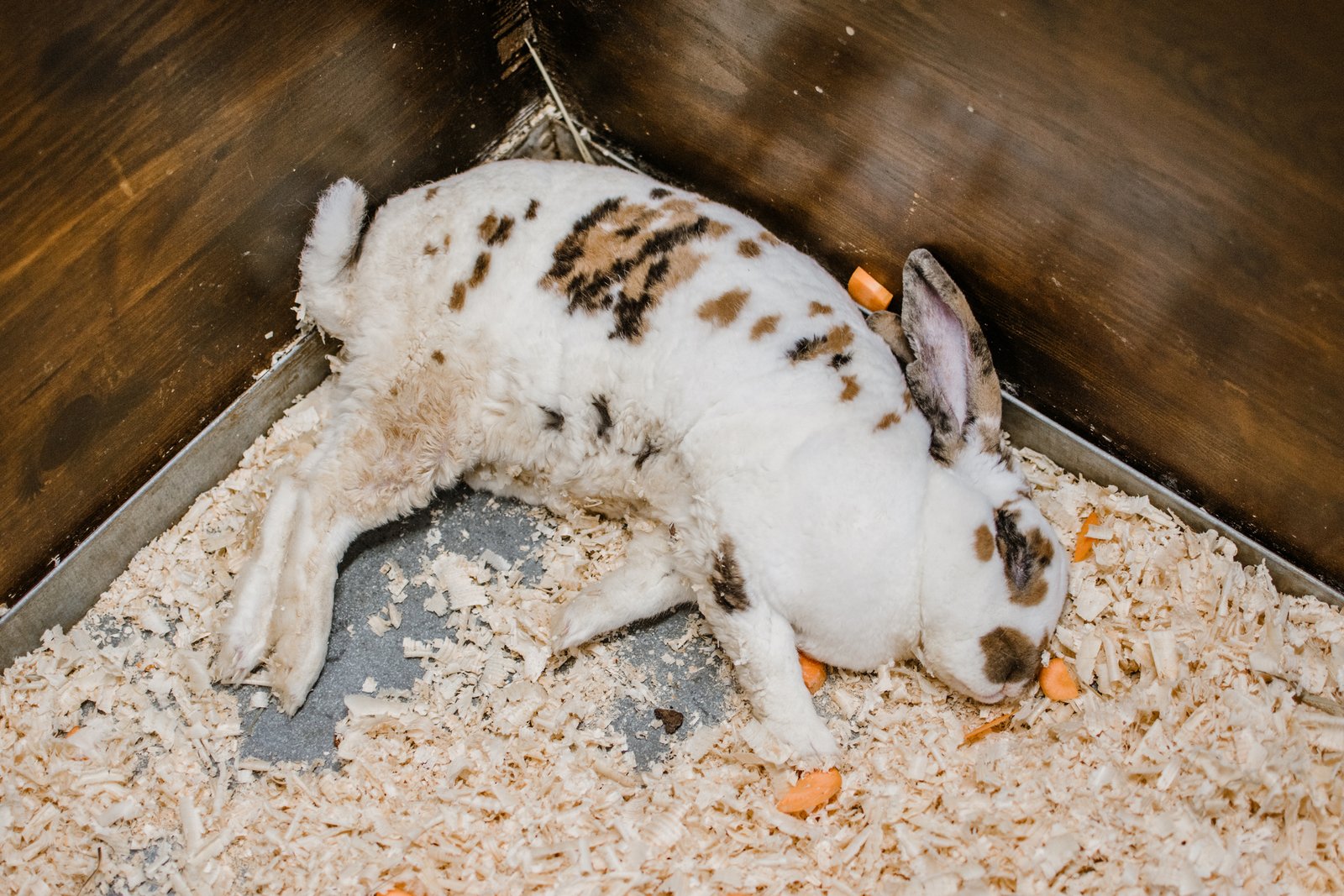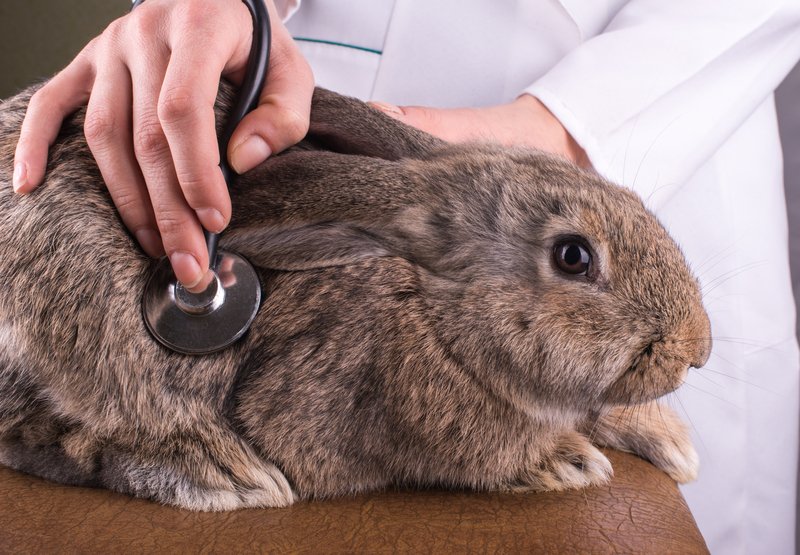Coccidiosis in rabbit is a dire health condition since it can be fatal. Knowing what rabbit coccidia is can rescue your bunny from a life-threatening situation. Through this blog post, you will learn what coccidiosis is and its causes. We will also teach you how to treat the condition and how you can prevent it. Continue reading to learn more!

Coccidiosis in Rabbit: What is it?
Rabbit coccidia is a health condition wherein a protozoan parasite called Eimeria ep. infects the bunny. There are about 17 species of the parasite infecting bunnies worldwide. Two forms of coccidian are observed in rabbits: the intestinal and the hepatic. Intestinal coccidiosis is more common in young bunnies that are only a few weeks to five months old.
On the other hand, hepatic coccidiosis can infect rabbits of all ages. The disease can easily be transmitted to rabbits that have poor sanitation. Instead of the intestine, the parasites will affect the liver and gallbladder. It is also possible that your bunny may experience secondary infections.
The severity of the disease may depend on your pet’s environmental stresses and age. It may also depend on the species of Eimeria sp. transmitted to the bunny. Mature and healthy rabbits can be affected but may show mild symptoms. Meanwhile, newly weaned rabbits in poor conditions can experience severe symptoms and die. Know more about coccidiosis through the video below.
Hepatic Coccodiosis vs. Intestinal Coccidiosis in Rabbit
Let us identify the difference between hepatic and intestinal coccidiosis. The hepatic coccidiosis is typically caused by the species called Eimeria stieda. Rabbits can be infected by ingesting the droppings of other bunnies. It can also be transmitted through contaminated food or water. The more oocysts they consume, the more severe their conditions become.
Unfortunately, it only takes one month after the exposure for the bunny to die. During the early infection, the lesions on the liver contain milky substances. But as weeks go by, the substances acquire cheesy-like consistency. In diagnosing the bunny, the vet will get a sample of the substance inside the lesion. He will examine it under a light microscope to see if it contains oocysts.
Meanwhile, intestinal coccidiosis is more common in young bunnies. Different species, such as E. magma, E. irresidua, E. media, and many more, are the causes of the condition. Even though you give them the best care, it won’t guarantee that the parasites won’t be transmitted to them. However, the infection is milder than the hepatic form. There are also fewer lesions in the intestines. But if ignored, the intestines may become thick and pale. The vet may also perform a fecal floatation test to check if oocysts are present in the droppings.
Symptoms of Coccidiosis in Rabbit
During the early exposure of the rabbit to the parasite, there may be no symptoms at all. But as your pet’s condition becomes severe, symptoms will become more noticeable. Below are some signs of rabbit coccidia:
Diarrhea and blood or mucous in the feces
One of the first signs of rabbit coccidia is severe and watery diarrhea. You will also notice that the bunny’s droppings contain blood and mucous. Usually, the blood looks like dark streaks on the feces. There are also instances that the droppings include large blood clots. The stools are also foul-smelling.
Loss of appetite
Because of pain and discomfort, your pet may also lose its appetite. You will notice that it will stop eating its favorite treats and the hay inside its enclosure. Consult a vet if your pet didn’t touch its food for more than four hours. Your bunny may also experience dehydration, weight loss, and lethargy.
Anemia
Due to excessive blood loss in the intestine, your bunny may experience anemia. It is a rare clinical sign that bunnies may experience due to coccidia. By checking the gums of your bunny, you will know if it has anemia. The usual pink color of the gums turns pale. Aside from that, you will notice that your bunny is weak and inactive.
Stomachache
Another symptom that you should be aware of is stomachache. Rabbits that have painful stomachs usually have hunched positions. They put weight on their front paws to prevent their belly from touching the ground. Too much pain may also cause them to grind their teeth. Your bunny may also show feistiness when handled or picked up.
Paralysis
For severe intestinal coccidiosis, your rabbit may suffer from convulsion or paralysis. Bunnies experiencing severe hepatic coccidiosis have liver and bile duct damage. It may lead to a coma. If you have seen any of these symptoms, don’t hesitate to bring your pet to the vet for a check-up. Lack of treatment may worsen your pet’s condition, leading to death.

Treating Coccidiosis in Rabbit
You can provide sulfaquinoxaline for rabbits experiencing hepatic coccidiosis to minimize the symptoms. Administer it to your pet by putting at least 0.4 % of the medicine in your pet’s water for at least 30 days. You can also combine 0.025% on the rabbit’s feed for 20 days. However, this medicine cannot prevent your pet from having lesions in its liver. Salinomycin, ponazuril, and amprolium are the other medications you can give.
In treating intestinal coccidiosis in rabbits, you can also administer sulfaquinoxaline. But you must give it for seven days. Wait for at least one week before giving the medicine to your bunny again. If there are any secondary bacterial infections, the vet may prescribe antibiotics. Those with severe cases must be hospitalized for assisted feeding and fluid therapy.
Depending on the severity of your bunny’s condition, the vet may advise you to treat your bunny at home. He will also prescribe you some oral medications. You must give your bunny a proper diet so that it will be able to regain its strength. If it doesn’t eat, you can feed it using a syringe. Rabbits eat their feces, so you have to clean its hutch every day so it won’t be able to ingest infected oocysts.

Recovery from Coccidiosis in Rabbit
To prevent reinfection, you must conduct a sanitation program. Disinfect the water bottles and food bowls to avoid contamination. Since parasites multiply in damp areas, keeping the bunny’s hutch dry is better. If your pet has wire cage bottoms, clean them with a wire brush daily. You can also disinfect it using a 10% of ammonia solution.
For the fast recovery of your bunny, provide it with a proper diet. Provide it with an unlimited amount of hay to aid its digestion. Also, ensure that your bunny is hydrated by giving it enough water. You can also provide some fluids, such as electrolytes. Since stress can affect your bunny’s condition, give it a quiet and safe environment.
Preventing Coccidiosis in Rabbit
To prevent coccidiosis in rabbit, you must provide it with a clean environment. Keep its hutch fresh and dry. Wash its water bottle and food bowl, especially if there are droppings. Disinfecting the enclosure with an ammonia solution can also kill the parasites. Disinfecting the enclosure with an ammonia solution can also kill the parasites.
For baby bunnies, you should ensure that they are getting enough colostrum. Thus, they would have stronger immunity against parasites. If you have to wean them, the feeding and watering devices must be free from fecal contamination. As much as possible, keep alterations to a minimum to prevent stressing them.
You must also be careful when buying bedding. Ensure that you get it from a reputable supplier to prevent any contamination. When introducing a new rabbit, put it in quarantine before letting it socialize. It will give you enough time to observe if the bunny is infected with coccidiosis. You must also let the vet check the droppings. Furthermore, fecal checks will help determine if your bunny has rabbit coccidia. Bring it to the vet immediately if you see changes in your bunny’s feces, behavior, and condition.
Frequently Asked Questions
Is it possible to treat rabbit coccidia?
Yes. By giving anti-protozoal drugs, your bunny can get cured of the condition. Some medications for bunnies with coccidia are trimethoprim sulphonamide or toltrazuril. The vet may advise hospitalizing your pet for assisted feeding and fluid therapy.
Is coccidiosis in rabbits fatal?
Without medical attention, coccidiosis can be fatal to rabbits. It is because the parasites damage vital organs such as the intestines or liver. If you suspect your bunny has this condition, you should bring it to the vet for proper treatment.
What are the common symptoms of coccidiosis?
Some of the common symptoms of coccidiosis are severe diarrhea and stomachache. You may also notice that your bunny has blood or mucous in its stools. It may also show signs of pain, such as grinding its teeth and hunching its body. Because of anemia, the pet may also become weak and pale.
Can I get infected by coccidiosis in rabbit?
The good news is that rabbit coccidia cannot be transmitted to humans. Hence, you are safe even though the disease infects your pet.

Conclusion
Rabbit coccidia is a dangerous condition that you should ignore. Without proper medication, your bunny may succumb to intense pain and die. Providing your pet with a clean environment can prevent it from getting contaminated. If your bunny has the symptoms, you should never hesitate to contact a vet and have your pet get treated.



